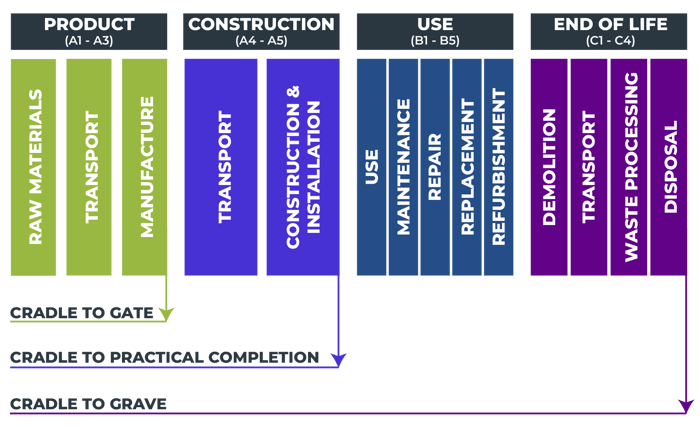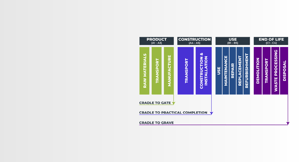What is a Life Cycle Assessment?
Before delving into the various stages of a life cycle assessment, it is crucial to understand what exactly a life cycle assessment entails. A life cycle assessment, often abbreviated as LCA, is a comprehensive evaluation of the environmental impacts associated with a product or service throughout its entire life cycle. This assessment considers every stage, from the extraction of raw materials to the disposal or recycling of the product.
Cradle to Gate vs Cradle to Grave
When conducting a life cycle assessment, there are two common approaches: cradle to gate and cradle to grave. Cradle to gate focuses on the environmental impact of a product from the extraction of raw materials to the point of leaving the manufacturing facility. This approach does not consider the use, maintenance, or end-of-life stages.
On the other hand, cradle to grave takes a more comprehensive view, assessing the product's environmental impact from the extraction of raw materials to the final disposal or recycling. By considering the entire life cycle, cradle to grave assessments provide a more accurate representation of the product's overall sustainability.

-
Material Usage
The first stage of a life cycle assessment is to quantify emissions from raw material usage. This stage involves evaluating the environmental impact of different materials and will form the basis for choosing the most sustainable option. Factors such as resource depletion, energy consumption, and emissions are considered during this stage. Opting for renewable or recycled materials can significantly reduce the environmental footprint of a product.
In recent years, there has been a growing emphasis on using materials that are not only environmentally friendly but also socially responsible. This means considering factors such as fair labour practices, human rights, and the impact on local communities when selecting materials. -
Upstream Transportation
The transportation stage of a life cycle assessment examines the environmental impact of moving raw materials, components, and finished products between various locations. This stage considers fuel consumption, emissions, and the distance travelled. Optimal transportation routes and methods can be identified to minimise the carbon footprint associated with transportation.
Additionally, advancements in logistics and transportation technology, such as electric vehicles and efficient routing systems, have the potential to significantly reduce the environmental impact of transportation. By choosing greener transportation options, businesses can contribute to a more sustainable supply chain. -
Manufacturing
The manufacturing stage of a life cycle assessment focuses on the environmental impact of the actual production process. This includes energy consumption, water usage, emissions, and waste generation. Identifying energy-efficient manufacturing techniques and implementing sustainable practices can reduce the environmental footprint of the manufacturing stage.
Implementing cleaner production methods, such as using renewable energy sources and reducing waste through recycling and reuse, can significantly enhance the sustainability of the manufacturing process. Through the incorporation of eco-friendly practices, businesses can reduce their environmental impact and contribute to a more sustainable future.
Assessing carbon emissions in the first three stages can be collectively referred to as cradle-to-gate assessment. -
Downstream Distribution
Transportation appears twice within the life cycle assessment stages. The first takes place within the manufacturing stage (i.e., upstream). The second, downstream transportation takes place within the delivery stage, when the product is transported to the desired location for the implementation stage or the first client if the product is a final product and does not require further implementations. -
Implementation & Use
The implementation stage of a life cycle assessment involves the installation/implementation and use of the product. This stage evaluates the energy consumption, emissions, and overall environmental impact of the product during its operational lifespan. Assessing the efficiency and durability of the product can help identify opportunities for improvement.
Promoting energy-efficient use and providing clear instructions for proper product usage can contribute to reducing the environmental impact during the implementation stage. Additionally, encouraging responsible consumption habits among consumers can further enhance the sustainability of the product's use phase.
An important factor to consider throughout a life cycle assessment is the emissions from the use of the product. For example, take a paper shopping bag vs a reusable bag for life; the bag for life will more than likely have a lower impact on the environment because they are stronger so they can be reused many times. Whereas a paper bag is more likely to break after limited use. -
Maintenance
The maintenance stage of a life cycle assessment focuses on the environmental impact associated with the upkeep and repair of the product. This stage considers factors such as energy consumption, emissions, and waste generation during maintenance activities. Implementing proactive maintenance practices can extend the lifespan of a product and reduce the need for replacements, thereby minimising its overall environmental impact. -
End of Life
The final stage of a life cycle assessment is the end of life, which encompasses the disposal or recycling of the product. This stage evaluates the environmental impact of different disposal methods, such as landfilling, incineration, or recycling. Opting for recycling or proper disposal methods can significantly reduce the environmental burden associated with the end of life stage.
Implementing comprehensive recycling programs and promoting responsible disposal practices can divert waste from landfills and encourage the circular economy. By embracing recycling and sustainable waste management, businesses and consumers can contribute to a more sustainable future.
The Bottom Line
The life cycle sustainability assessment of products plays a crucial role in evaluating the environmental impact of a product throughout its entire life cycle. By considering each stage from cradle to gate and cradle to grave, businesses and consumers can make informed decisions to promote sustainability. Material selection, transportation, manufacturing, implementation, use, maintenance, and end of life are all essential stages in a life cycle assessment. By understanding and optimising these stages, we can work towards a more sustainable future for generations to come.


